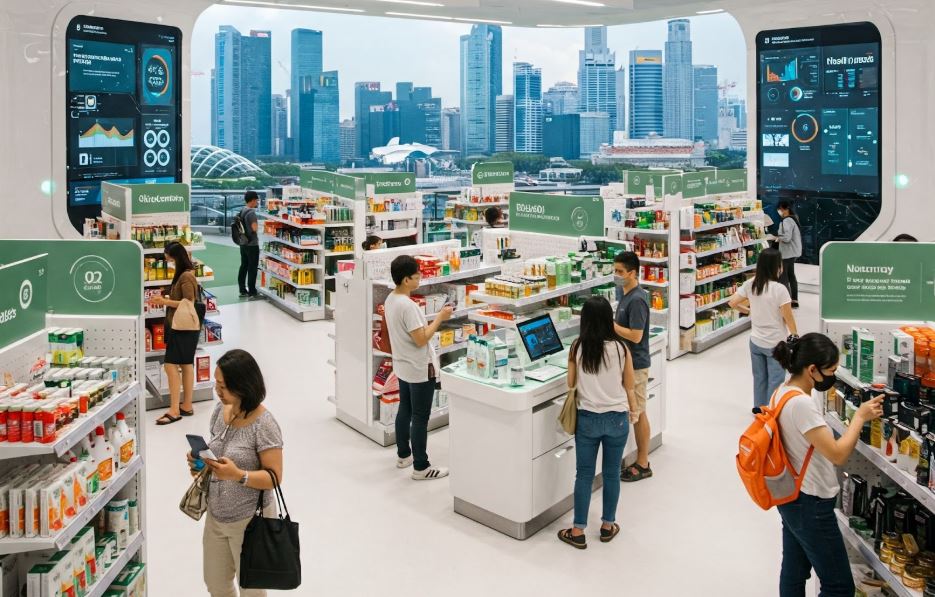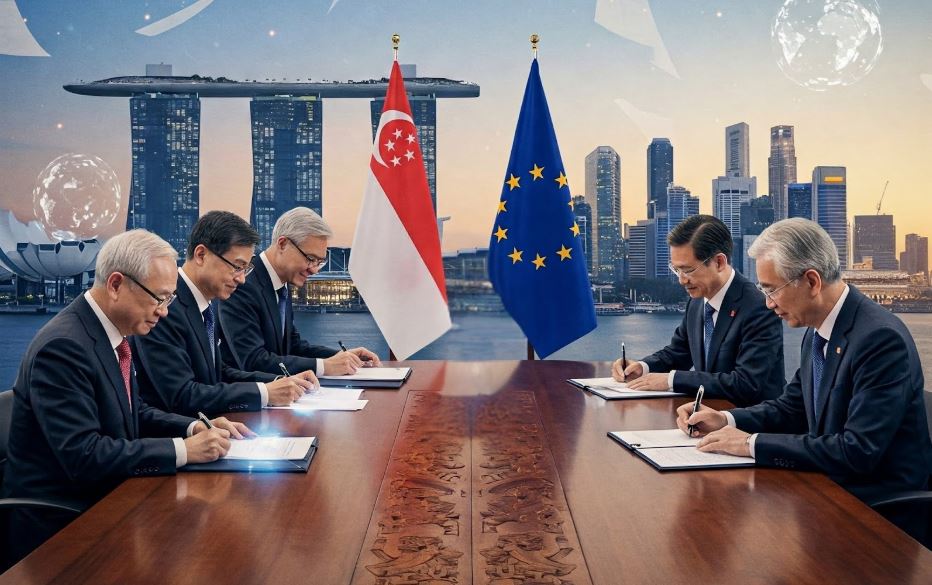Singapore eases monetary policy again as US tariffs weigh on growth

Singapore’s central bank eased its monetary policy on April 14 for the second time this year, responding to slowing global demand and escalating trade tensions triggered by U.S. tariffs. The move, aimed at cushioning the economy’s impact, comes as the city-state’s small and medium enterprises (SMEs), especially in export-heavy sectors, face rising uncertainty.
The Monetary Authority of Singapore (MAS) announced it will reduce the pace of appreciation of the Singapore dollar’s (SGD) nominal effective exchange rate (S$NEER), a calibrated tool used instead of interest rates to manage inflation and growth. The policy band’s slope, previously adjusted down to 1% in January, has now been reduced to an estimated 0.5% per year, according to analysts at UOB. The center and width of the policy band remain unchanged.
For businesses, particularly in sectors like electronics manufacturing, logistics and wholesale trade, this provides a form of monetary easing designed to improve export competitiveness by slowing the rise of the Singapore dollar against a basket of currencies. A stronger SGD makes Singaporean goods and services more expensive overseas, so a moderated appreciation can help support export demand. This is especially critical now as U.S. President Donald Trump’s 10% blanket tariff on all imports, as well as harsher penalties on select countries, begins to disrupt global trade flows.
Singapore’s economy, highly exposed to global trade and supply chains, is already showing signs of strain. Seasonally adjusted GDP shrank by 0.8% in Q1 2025, led by a 4.9% quarter-on-quarter drop in manufacturing and a 2.3% fall in construction. In response, the Ministry of Trade and Industry (MTI) downgraded Singapore’s full-year GDP growth forecast from 1%-3% to just 0%-2%. That revision places Singapore dangerously close to a technical recession (two consecutive quarters of negative growth), with Citibank forecasting a “mild three-quarter recession” starting in Q3 2025.
The MAS decision signals that policymakers are willing to act quickly to preserve Singapore’s business-friendly environment. However, it also underscores the risks for businesses dependent on regional and global trade, as customers in China, the U.S. and the EU may cut back on orders or delay contracts due to tariff shocks.
The Singapore dollar responded modestly to the policy news, up 0.2% to 1.3165 per U.S. dollar. However, despite this gain, the currency is down 5.6% against the Japanese yen and 5.5% against the euro in 2025. For businesses sourcing goods from Europe or Japan or funding expenses like overseas tuition or branch operations in those regions, the weaker SGD could increase costs. Conversely, it has strengthened against regional currencies, including a 2% gain against the Malaysian ringgit and a 1.1% rise against the British pound, which may benefit importers of goods from these countries.
MAS has not ruled out further easing. Suppose core inflation continues to fall or GDP contracts again in Q2. In that case, analysts expect that MAS could reduce the S$NEER slope to zero or even recenter the policy band downwards – essentially allowing the currency to weaken. The last time such a drastic move was made was in March 2020, at the height of the COVID-19 crisis, to shield the economy from recession.
The MAS emphasized that “a more abrupt or persistent weakening in global trade will have significant ramifications on Singapore’s trade-related sectors, and, in turn, the broader economy.” In other words, Singapore remains one of the most efficient and well-managed business hubs globally, but resilience and careful planning will be critical in navigating the global storm ahead.



